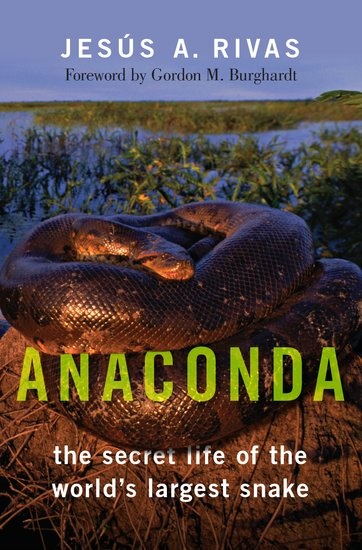Written by Jesús Rivas, the undisputed expert on the biology of anacondas, this is the first authoritative book on the biology of the green anaconda. In Anaconda: The Secret Life of the World's Largest Snake, Rivas describes his experiences over a quarter of a century, exploring the secret life of these fantastic snakes, including: their diet, movement patterns, life and tribulations, survival, behavior, and fascinating reproductive life. More than just presenting facts about anacondas, Rivas tells his story about studying them in the field.
Anaconda presents a comprehensive treatment of the natural history of the elusive green anacondas. Drawing on twenty-five years of research on this reptile in the wild and in captivity, Rivas delves into the biology, behavior, demography, reproductive habits, and diet of the anaconda, as well as issues relating to its conservation. Rivas uses an ecological and evolutionary framework to present his research and supplements hard data with descriptions of his research methods, including how he tracked down the anaconda for observation and study in wild. The resulting book is a complete and engaging examination of the world's largest snake.
The rich photographs provided, paired with Rivas' storytelling, makes this the perfect book for anyone looking to learn (or even learn more!) about this mysterious snake.
Acknowledgments
Foreword by Gordon Burghardt
Chapter 1: Science, love, and anaconda research
Chapter 2: The anaconda challenge: learning how to learn
Chapter 3: What is a good real state for an anaconda?
Chapter 4: Anaconda's tales: Sickness & health, birth & death in the life of a giant snake
Chapter 5: How much is supper?: Predator diet and prey retaliation
Chapter 6: The largest of motherhood: Fecundity and female reproductive strategy
Chapter 7: How big can a giant be?
Chapter 8: Hey, it's me, it's me!: Courtship and confusion in the male reproductive strategy
Chapter 9: The origin of the mystery: Adapting to life in a big dam
Chapter 10: Conservation of anacondas and beyond: the interface of biology, politics and economics
Chapter 11: Epilogue: A different approach
Literature Cited
Index









